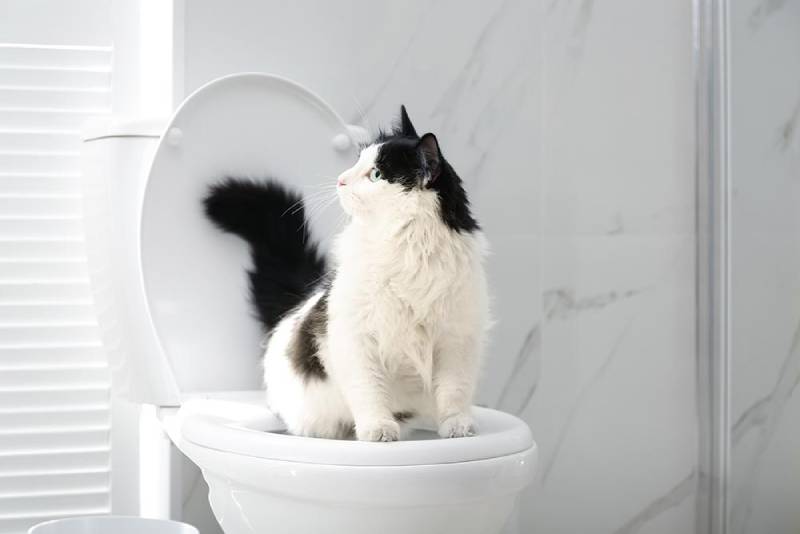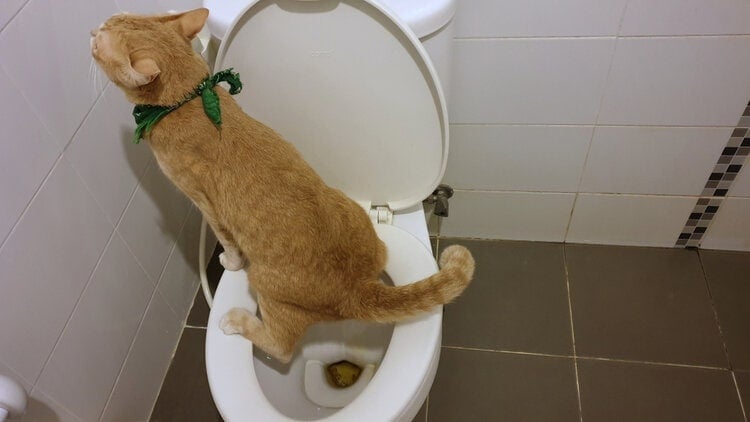Reasons You Must Never Flush Cat Poop Down Your Toilet - Important Facts
Reasons You Must Never Flush Cat Poop Down Your Toilet - Important Facts
Blog Article
Just about every person seems to have their own unique way of thinking involving Can You Flush Cat Poop Down The Toilet?.

Introduction
As cat proprietors, it's vital to be mindful of just how we deal with our feline close friends' waste. While it may appear convenient to flush feline poop down the toilet, this method can have destructive repercussions for both the setting and human wellness.
Environmental Impact
Purging pet cat poop presents hazardous pathogens and parasites into the water, posing a considerable danger to water environments. These contaminants can negatively impact marine life and concession water high quality.
Health Risks
Along with environmental problems, purging feline waste can likewise posture health risks to humans. Pet cat feces might have Toxoplasma gondii, a bloodsucker that can trigger toxoplasmosis-- a potentially serious health problem, specifically for expecting women and people with weakened body immune systems.
Alternatives to Flushing
Thankfully, there are much safer and extra accountable means to get rid of cat poop. Consider the following alternatives:
1. Scoop and Dispose in Trash
One of the most common approach of throwing away cat poop is to scoop it into an eco-friendly bag and throw it in the garbage. Make sure to make use of a committed litter scoop and dispose of the waste promptly.
2. Use Biodegradable Litter
Go with eco-friendly feline litter made from products such as corn or wheat. These clutters are environmentally friendly and can be securely disposed of in the garbage.
3. Bury in the Yard
If you have a lawn, think about hiding feline waste in a marked location far from vegetable gardens and water sources. Make sure to dig deep adequate to avoid contamination of groundwater.
4. Set Up a Pet Waste Disposal System
Invest in a pet garbage disposal system especially made for pet cat waste. These systems use enzymes to break down the waste, minimizing odor and environmental effect.
Final thought
Accountable pet ownership expands beyond offering food and shelter-- it also includes correct waste monitoring. By avoiding flushing cat poop down the commode and selecting different disposal methods, we can minimize our environmental impact and safeguard human wellness.
Why Can’t I Flush Cat Poop?
It Spreads a Parasite
Cats are frequently infected with a parasite called toxoplasma gondii. The parasite causes an infection called toxoplasmosis. It is usually harmless to cats. The parasite only uses cat poop as a host for its eggs. Otherwise, the cat’s immune system usually keeps the infection at low enough levels to maintain its own health. But it does not stop the develop of eggs. These eggs are tiny and surprisingly tough. They may survive for a year before they begin to grow. But that’s the problem.
Our wastewater system is not designed to deal with toxoplasmosis eggs. Instead, most eggs will flush from your toilet into sewers and wastewater management plants. After the sewage is treated for many other harmful things in it, it is typically released into local rivers, lakes, or oceans. Here, the toxoplasmosis eggs can find new hosts, including starfish, crabs, otters, and many other wildlife. For many, this is a significant risk to their health. Toxoplasmosis can also end up infecting water sources that are important for agriculture, which means our deer, pigs, and sheep can get infected too.
Is There Risk to Humans?
There can be a risk to human life from flushing cat poop down the toilet. If you do so, the parasites from your cat’s poop can end up in shellfish, game animals, or livestock. If this meat is then served raw or undercooked, the people who eat it can get sick.
In fact, according to the CDC, 40 million people in the United States are infected with toxoplasma gondii. They get it from exposure to infected seafood, or from some kind of cat poop contamination, like drinking from a stream that is contaminated or touching anything that has come into contact with cat poop. That includes just cleaning a cat litter box.
Most people who get infected with these parasites will not develop any symptoms. However, for pregnant women or for those with compromised immune systems, the parasite can cause severe health problems.
How to Handle Cat Poop
The best way to handle cat poop is actually to clean the box more often. The eggs that the parasite sheds will not become active until one to five days after the cat poops. That means that if you clean daily, you’re much less likely to come into direct contact with infectious eggs.
That said, always dispose of cat poop in the garbage and not down the toilet. Wash your hands before and after you clean the litter box, and bring the bag of poop right outside to your garbage bins.
https://trenchlesssolutionsusa.com/why-cant-i-flush-cat-poop/

I was made aware of that editorial about Don’t flush cat feces down the toilet from a good friend on a different web page. Liked our write-up? Please share it. Let others discover it. Many thanks for your time. Kindly pay a visit to our site back soon.
Visit My Site Report this page